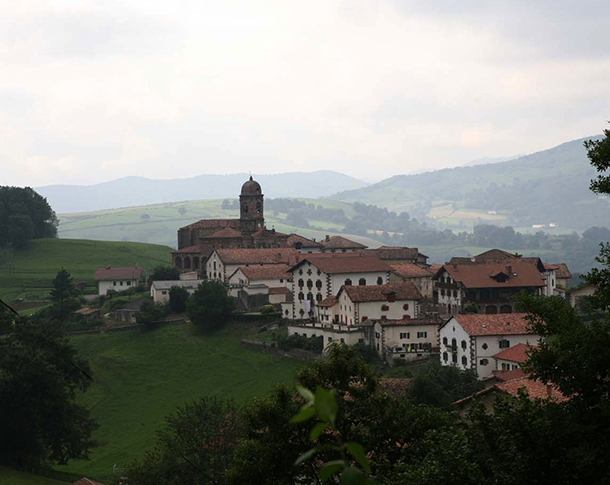Renaissance churches in the Baztan valley
By María Josefa Tarifa Castilla
Introduction
Throughout the 16th century, most of the existing churches in the Baztan Valley were the object of architectural interventions undertaken in the Renaissance style prevailing at the time. A century in which there was a real construction fever, palpable throughout Navarre, favored by a period of political stability, economic recovery and high population growth, which led to the reform of the existing medieval temples or the Building of new ones, either because they had deteriorated in its factory or because of the need to expand its size to accommodate the growing membership.
These religious buildings were built by master stonemasons from the area, experts in the cutting and carving of ashlars, with stone from the quarries of the valley, being turned inside in most cases with star-shaped ribbed vaults formed by stone ribs of varied design, as happens in the rest of the Navarrese temples of the time, since the roots of traditional architecture hindered the penetration of new, more avant-garde solutions.
However, the parish churches of Ziga, Gartzain and Lekaroz present a singularity at the level of roofs that the rest of the churches in the valley do not have, since they turn the space of the chevet with a stony gothic shell, a reflection of the substitution of the traditional ribbed vaults of late Gothic heritage for new vaulting of classical ancestry. This covering reveals the assimilation by the stonemasons who executed them of the architectural treatise of the Renaissance and their training in the graphic design , knowledge and skills that only the most qualified professionals possessed, as exemplified by Juan de Garaicoechea y Oiz.
ECHEVERRÍA GOÑI, P. L. and FERNÁNDEZ GRACIA, R., "Arquitectura religiosa de los siglos XVI al XVIII en Navarra", in Ibaiak eta Haranak, Guía del patrimonio histórico-artístico-paisajístico, t. 8, San Sebastián, Etor, 1991, pp. 175-216.
FERNÁNDEZ GRACIA, R., (coord.), ECHEVERRÍA GOÑI, P. L. Y GARCÍA GAINZA, M. C., El arte del Renacimiento en Navarra, Pamplona, Gobierno de Navarra, 2005.
GARCÍA GAINZA, M. C., ORBE SIVATTE, M., DOMEÑO MARTÍNEZ DE MORENTIN, A. and AZANZA LÓPEZ, J. J., Catalog Monumental de Navarra, V*. Merindad de Pamplona, Pamplona, Institución Príncipe de Viana, 1994, pp. 285-422.
OMEÑACA SANZ, J. M., "La iglesia parroquial de Ciga en el Baztan", Scripta Theologica, t. 16, 1984 / 1-2, pp. 543-552.
TARIFA CASTILLA, M. J., "The shell churches of the Renaissance in Baztan. Cuadernos de Artes Plásticas y Monumentales, San Sebastián, Sociedad de Estudios Vascos, 2009, pp. 333-405.











